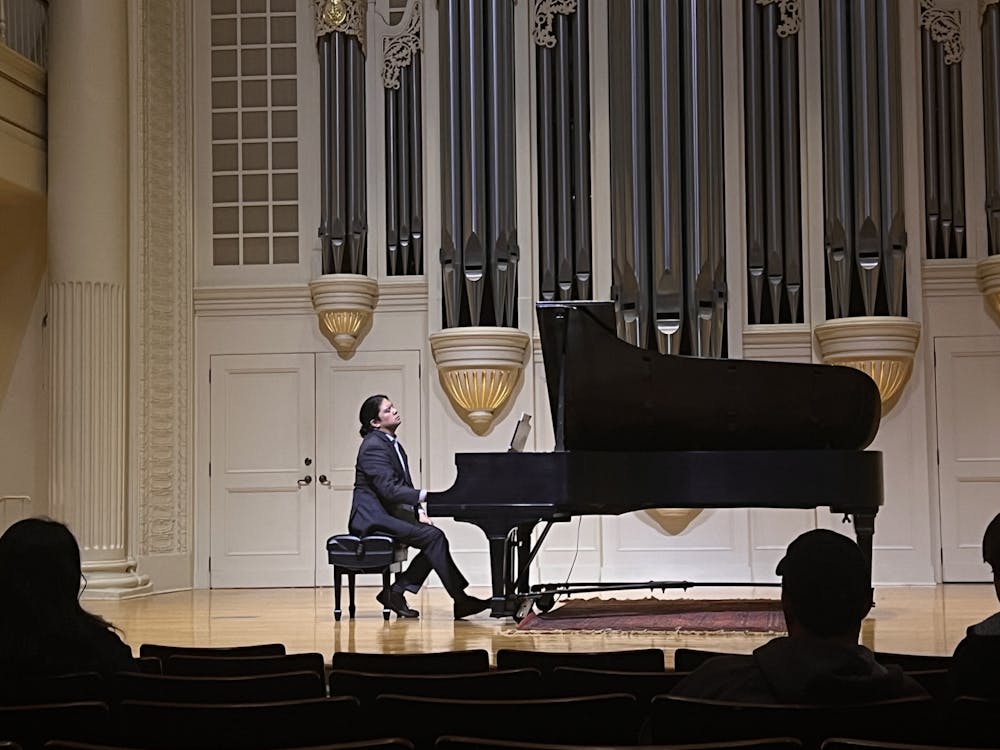Leonidas Lagrimas performed a series of solo piano works Wednesday evening at Whitley Auditorium. Lagrimas serves as assistant professor of piano and piano pedagogy at Western Carolina University.
“What story do you form when you hear this music?” Lagrimas said.
Lagrimas said he wanted his piano recital to help others understand that not all music tells a story in the same way.
The pieces Lagrimas shared, works known as “character pieces,” are short, lighter pieces that allow composers to convey stories that could be interpreted in many different ways by its listeners.
Lagrimas opened each piece with a brief background history of its creation. Before playing “Organ Sonata No. 4” in E minor by J.S. Bach, Lagrimas said he included it in the program because the music was “so beautiful,” it didn’t need to tell a story. He encouraged audience members to connect their own story to the piece.
Elon University freshman Maddy Shapiro said “Organ Sonata No. 4” in E minor reminded her of a story from her childhood.
“When I was in the car with my mom as a kid coming back from a road trip, she used to play the classical station really late at night so my sister and I could fall asleep,” Shapiro said.
Before playing his fourth number “Escape to Innerspace, Op. 138” by Dianne Goolkasian Rahbee, Lagrimas reminded the audience that no matter one's age, there is always a story to be shared through the piano.
“What if even the youngest beginner was given the opportunity to tell a story by the piano instead of merely worrying about getting the notes right?” Lagrimas said.
Lagrimas said this specific piece sounds different each time it is played, as the pianist is given freedom in choosing certain techniques.
“No two performances sound the same and the performers are free to make all kinds of decisions with a fixed set of pitches,” Lagrimas said. “In terms of the rhythm, the pedaling, the volume and the meter or lack thereof, it is all unique to the performer.”
For his closing piece, Lagrimas performed “Preludes, Book I” by Claude Debussy. Lagrimas said that Debussy placed that title at the bottom of the music sheet in parentheses instead of opting for the top, and the reason why is also up for interpretation.
“One of my students came up with one of the best interpretations of all, which is when you go to a museum and you see a wonderful painting, the first thing you do is don’t go look at what the title is.” Lagrimas said. “You take a step back and you take in the painting. And then, if you want, you can look at the little prints at the bottom.”
Lagrimas encouraged all of his listeners to view music through this interpretation, to not worry about who wrote it or how they might interpret it, but to give it their own meaning and appreciate the art for what it is, not what it could be.


